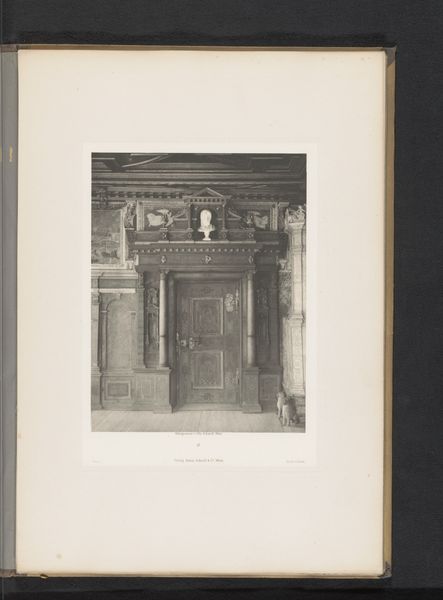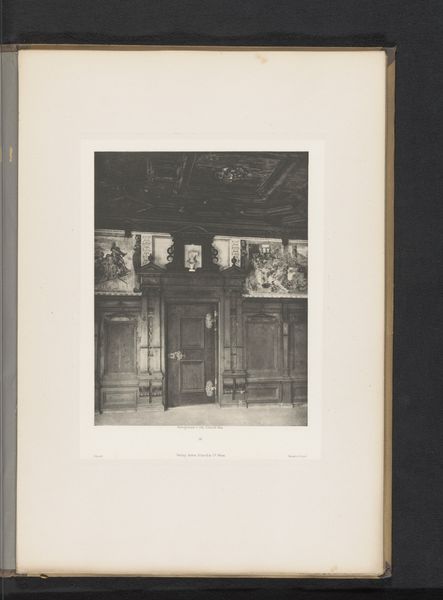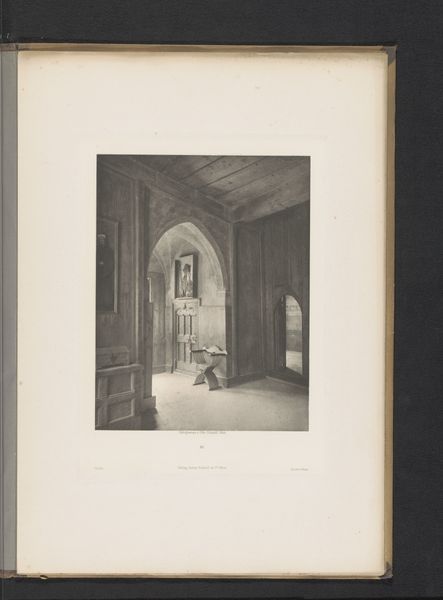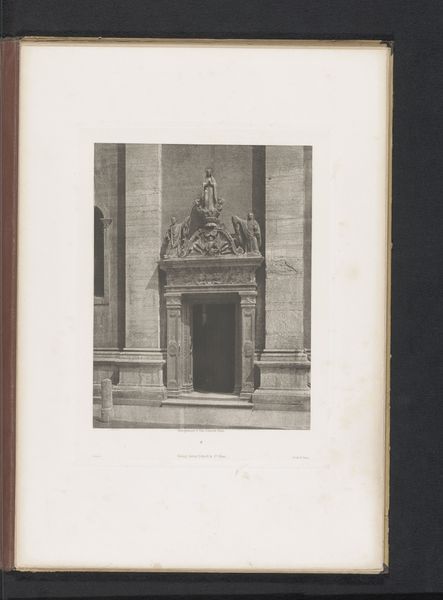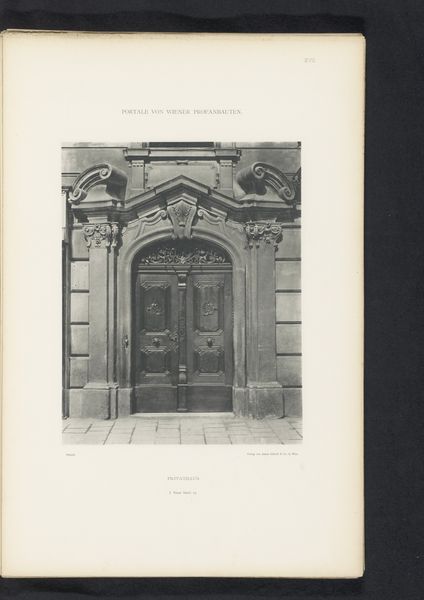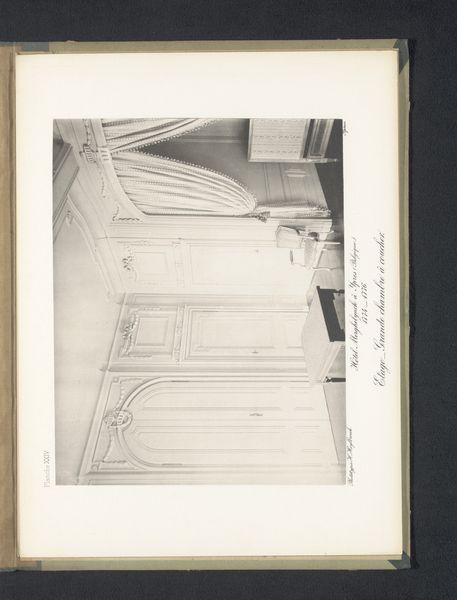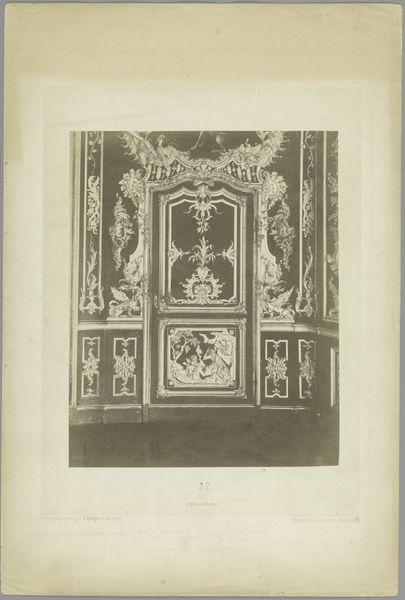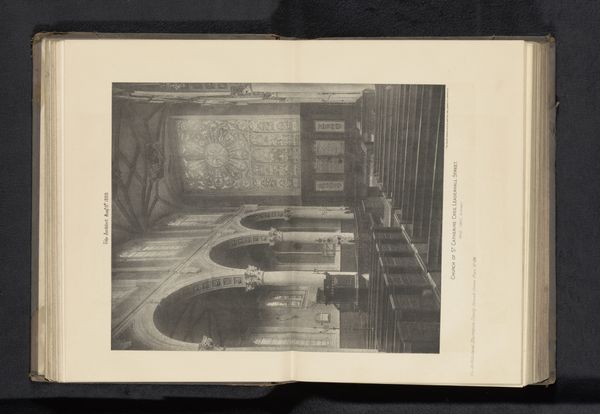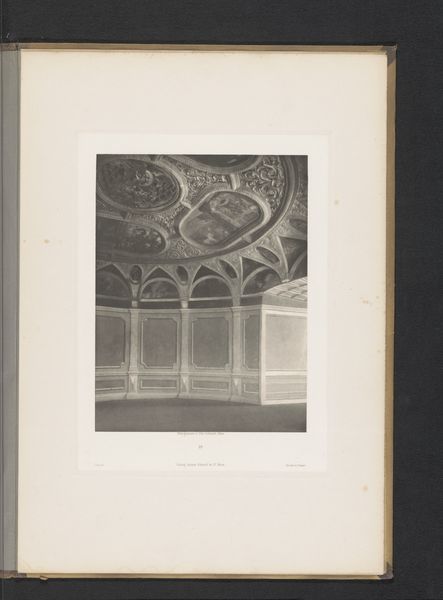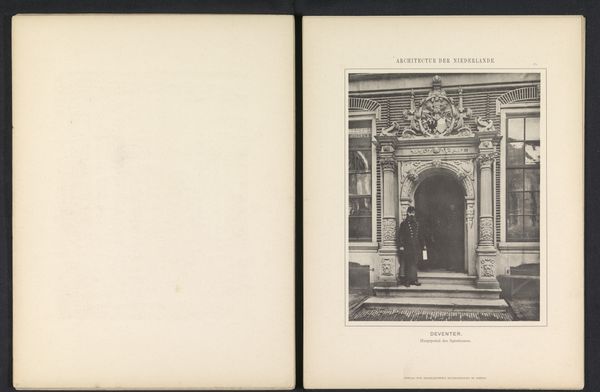
Gezicht op een deur in de Fürstenzimmer van Slot Velthurns bij Bressanone, Italië before 1891
0:00
0:00
drawing, print, etching, photography, woodcut, marble
#
portrait
#
drawing
#
aged paper
# print
#
etching
#
landscape
#
paper texture
#
photography
#
woodcut
#
marble
#
statue
Dimensions: height 240 mm, width 185 mm
Copyright: Rijks Museum: Open Domain
Editor: Here we have Otto Schmidt’s "View of a Door in the Fürstenzimmer of Velthurns Castle near Bressanone, Italy," created before 1891. It seems to be an etching, judging by the fine lines. The overall impression is one of quiet, imposing formality. What strikes you most about this piece? Curator: What immediately grabs my attention is how this apparently straightforward image of a doorway actually speaks volumes about power, access, and historical narrative. This isn't just about a door; it's about who is allowed to pass through it, and what spaces are deemed worthy of such elaborate presentation. The choice of a seemingly mundane subject, elevated through the precise etching technique, almost fetishizes access, doesn’t it? Who do you think the bust above the door represents, and how does its presence impact the power dynamics suggested by the architecture? Editor: I hadn’t considered the "fetishizing of access" aspect! The bust, I assume, is of someone important - maybe even the ‘Fürst’ mentioned in the title? Does the artwork critique or celebrate that kind of hierarchical structure, do you think? Curator: Exactly. We need to unpack the artist’s intentions in representing such overt symbols of authority. Is it a neutral observation, or does it subtly critique the power structures of the castle, and by extension, the aristocracy of the time? Consider, too, that this image was created before 1891, a period of significant social upheaval across Europe. Photography and printmaking were becoming more accessible. Who was the intended audience for this image, and how might their own social positioning influence their reading of it? Editor: So, even a seemingly simple image of a door can become a window into understanding broader social and political contexts. That’s fascinating. I’ll definitely look at architectural depictions differently now! Curator: Absolutely. And remember, art is rarely neutral; it’s a product of its time, embedded within complex power dynamics. Our role is to excavate those meanings and ask critical questions. This exercise has pushed me to reconsider the power dynamics inherent in architectural representation.
Comments
No comments
Be the first to comment and join the conversation on the ultimate creative platform.
